If you read German, you might also want to check out "Objekte im Netz", which is about the digitalisation of collections - here's the page about the project in the GNM, which includes links to more, such as the project publication (available free as pdf).
Search the Blog
Latest Comments
If you read German, you might also want to check out "Objekte im Netz", which is about the digitalisation of collections - here's the page about the project in the GNM, which includes links to more, such as the project publication (available free as pdf).
Over the past years, I've done so many presentations in all kinds of different venues and for all kinds of different events, but the virtual version is quite new for me, and I was extra-nervous (Will all the tech work as intended? Will my internet connection hold up for the discussion part?). Having everything pre-recorded also means that there is no way to adapt things on the fly, in case the audience seems extra-interested in a certain topic, or in case everyone's eyes glaze over. You also can't tell from the room if people like the thing already during the presentation, you need to wait until it's all over and there is feedback, which makes it very different too, and it does take some getting used to. Another thing I missed is the immediate feedback for the questions, or the possibility to quickly ask something back to clarify. The questions were typed out on the text channel in discord, then read out by one of the EXARC volunteers for everyone to hear, then I got to answer them. This format does work well in general, and it does reduce the problem of multi-person audio on conference calls, where only one can speak at any one time, and background noises from somewhere else might kill the intended sound for everyone - but it lacks the easy interactivity of real-life Q&A sessions.
It did all work well, though, and there were a lot of interesting questions, some of which were totally unexpected for me (like the one whether I have worked with material that I'd prefer never to touch again). Though I did miss the immediate audience feedback, it was also really nice to just sit at home in a comfy chair, with the cat in the comfy chair next to me (I'm afraid she didn't really count as moral support, she was sleeping), and interact with people interested in tablet-weaving from all over the world, and see a lot of familiar names on the channel. With the easy access for a lot of people to digital presentations such as that, I can very easily live with the downsides of the format!
The videos are available on the Lauresham YouTube channel, both in English (title text is German too, but there will be English spoken text) and in German - so you can still watch them, in case you missed the event yesterday.
Let me know if you have any questions!
It's a twill weave, with animal patterns in colour on an off-white background or in off-white on coloured background; and said background is green, red, and light bluegreen.
This is the overview picture from the museum:

...and here are some detailed pictures that I took, with kind permission from the museum.
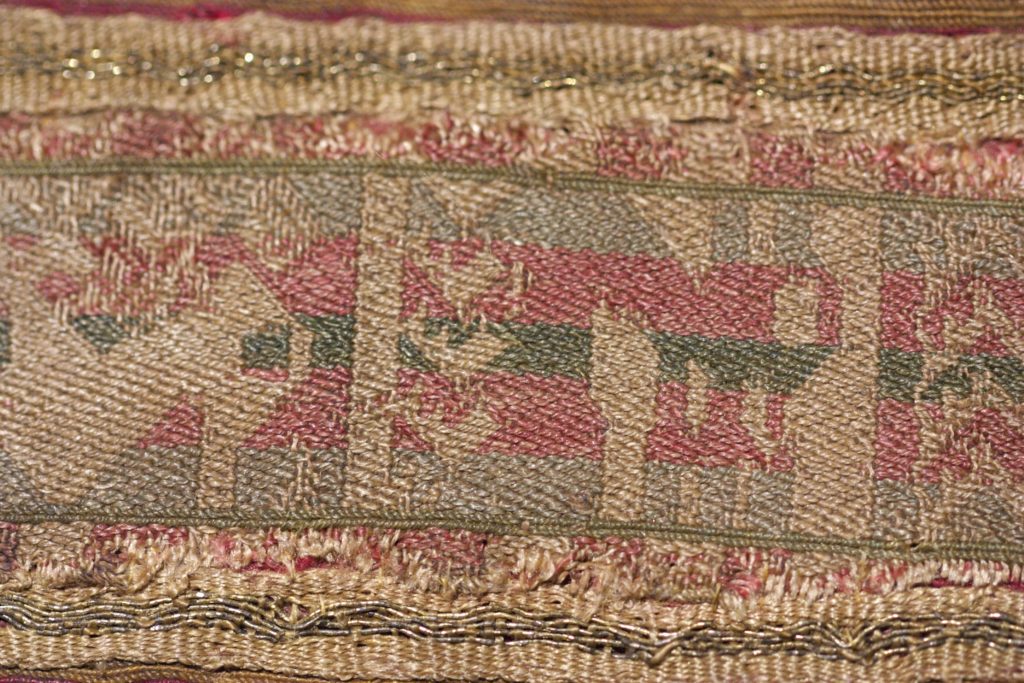
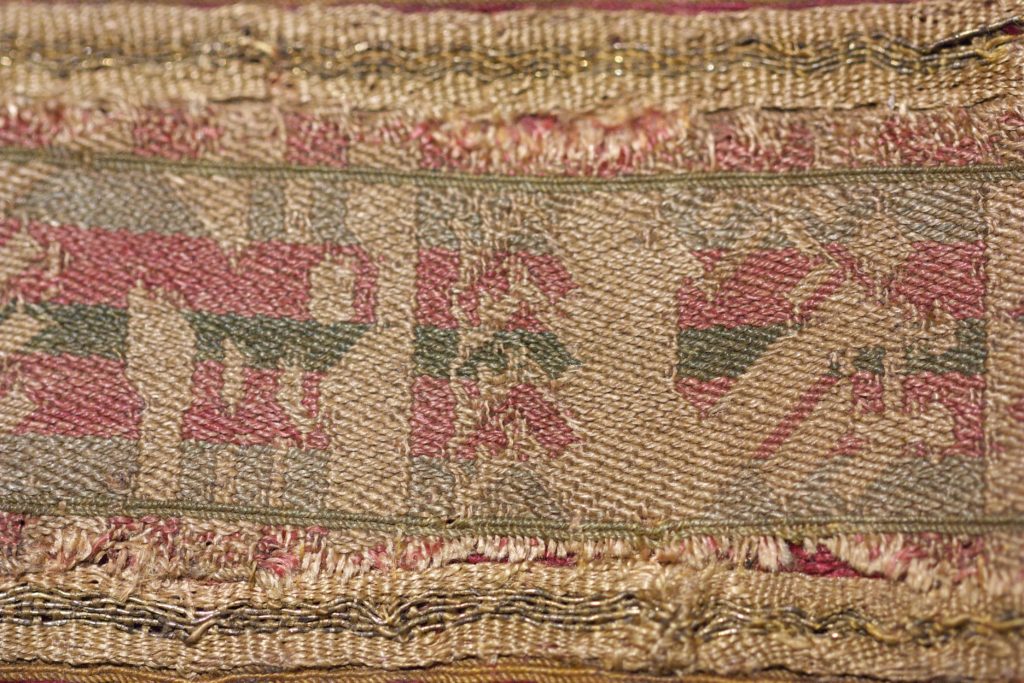
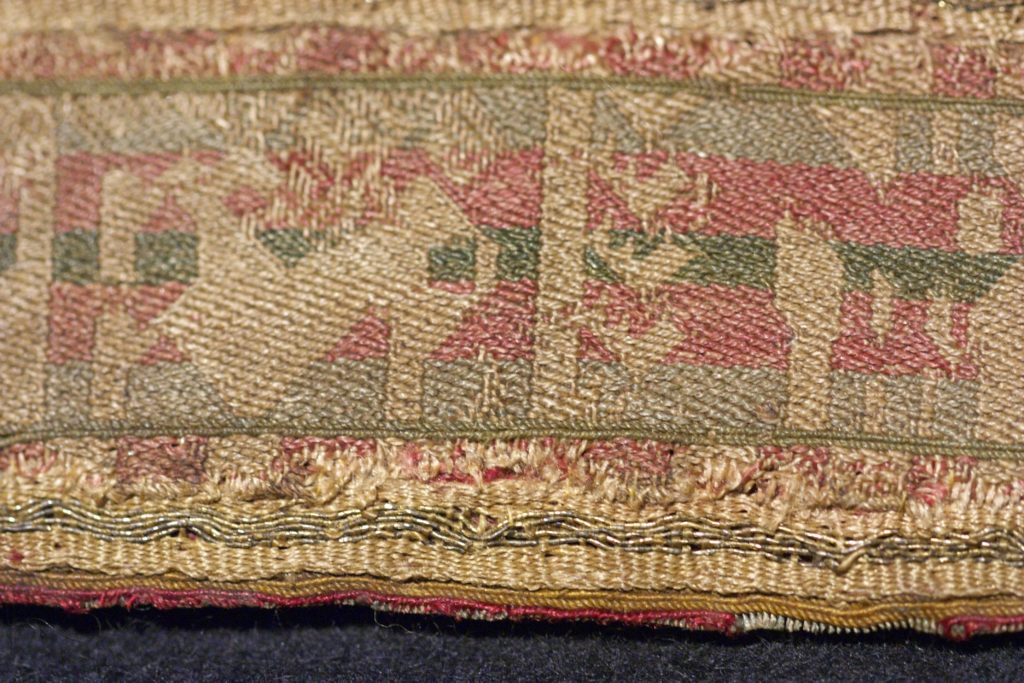
It's a beautiful piece, and I am definitely itching to try and weave some of these little animals. According to my count, it's 2+41+2 tablets, so I can try them on my 42 tablet playground band. Once I have the current things done and finished, that is...
And here's a review of the experience - maybe giving you a guideline on what to look for.
Datenschutzhinweis
Diese Webseite verwendet YouTube Videos. Um hier das Video zu sehen, stimmen Sie bitte zu, dass diese vom YouTube-Server geladen wird. Ggf. werden hierbei auch personenbezogene Daten an YouTube übermittelt. Weitere Informationen finden sie HIERDatenschutzhinweis
Diese Webseite verwendet YouTube Videos. Um hier das Video zu sehen, stimmen Sie bitte zu, dass diese vom YouTube-Server geladen wird. Ggf. werden hierbei auch personenbezogene Daten an YouTube übermittelt. Weitere Informationen finden sie HIERLike so many other museums, the Städel Museum is offering its collections in digital form, so you can visit and have a look at art via the 'Net. Their motto for this? #STAYDELATHOME. I have laughed my ass off about that. (Proof, again, that I am easily amused...) Do go check out their collections, they have a number of wonderful medieval artworks as well as a lot of more modern ones.
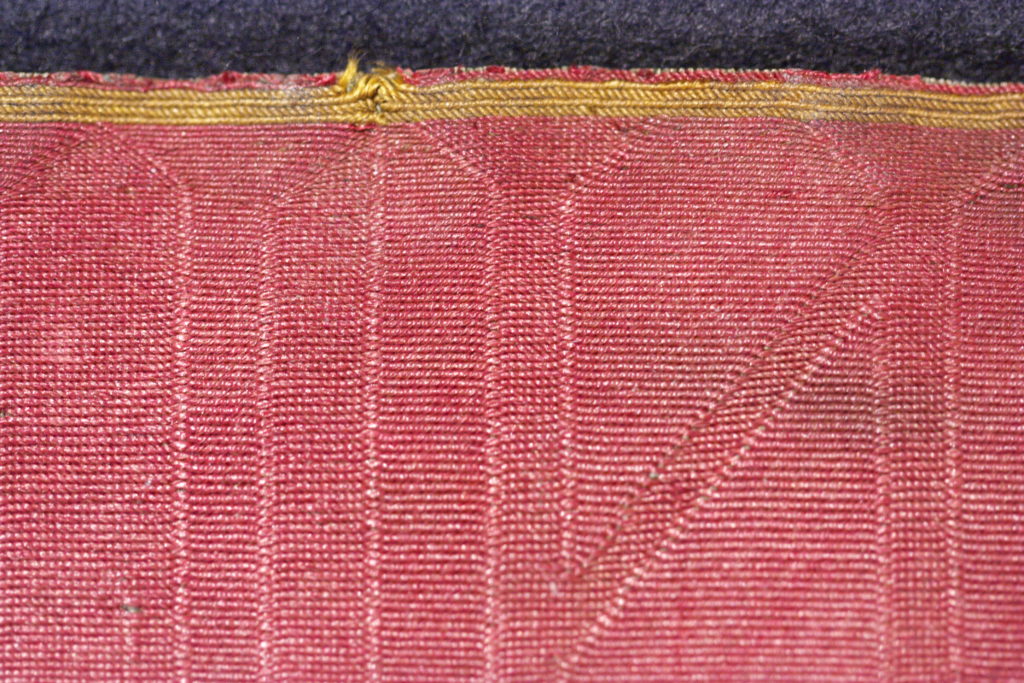
This is a close-up of a detail from the Albecunde weave. You can see that the weft threads are pressed in very, very closely. You can also admire the beautiful colour (after so many hundreds of years!)
At about the middle of the image, there's a general reversal of turn direction of all the tablets, including the 6 selvedge tablets (there's some damage at the selvedge in that spot as well).
And here it is in blurry comparison to one of my bands, woven from the embroidery silk:
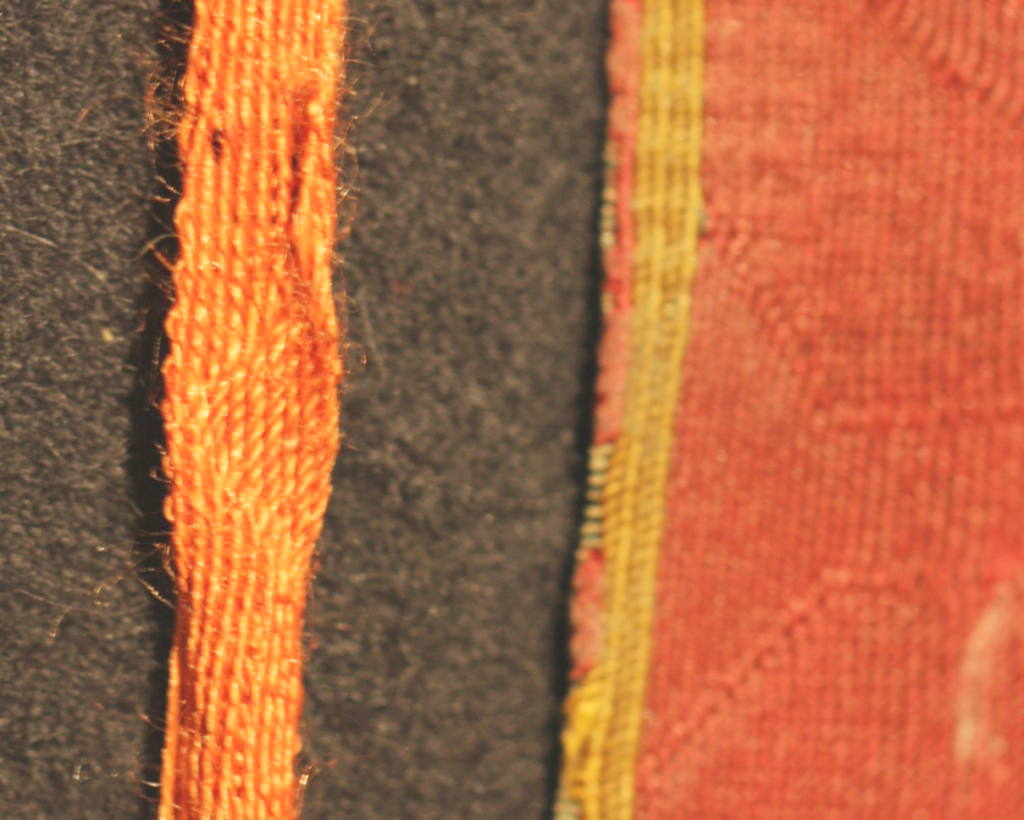
The individual tablet cords really are tiny... my band is about 4 mm wide with 9 tablets, and the original about 38 mm with 92 tablets.
You can visit the original in the Museum St. Afra in Augsburg, it is well worth a visit!
Here's more impressions from Lauresham:
First of all, the vinyard:

This time of year, everything was full of wild flowers, too.

Of course it's not only fields and pastures and vinyard - there are the houses as well, which I have mostly omitted until now. Here they are, finally:
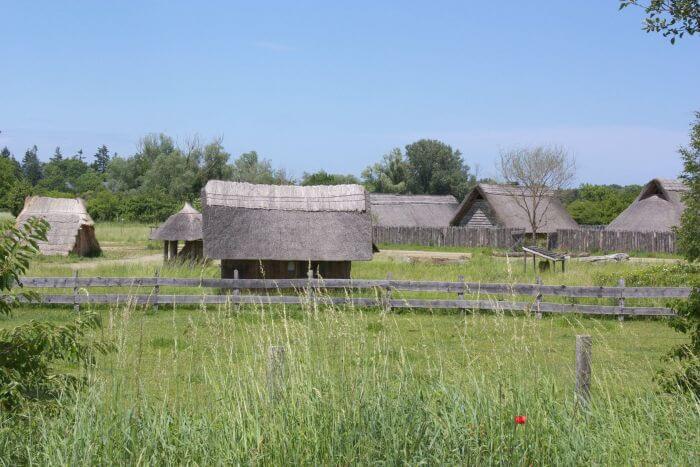
As you can surely guess, one of these houses was much more important for me to see than the others - the weaving house. We spent a little time inside that, so I could get an overview of the looms, tools, and loomweights available.
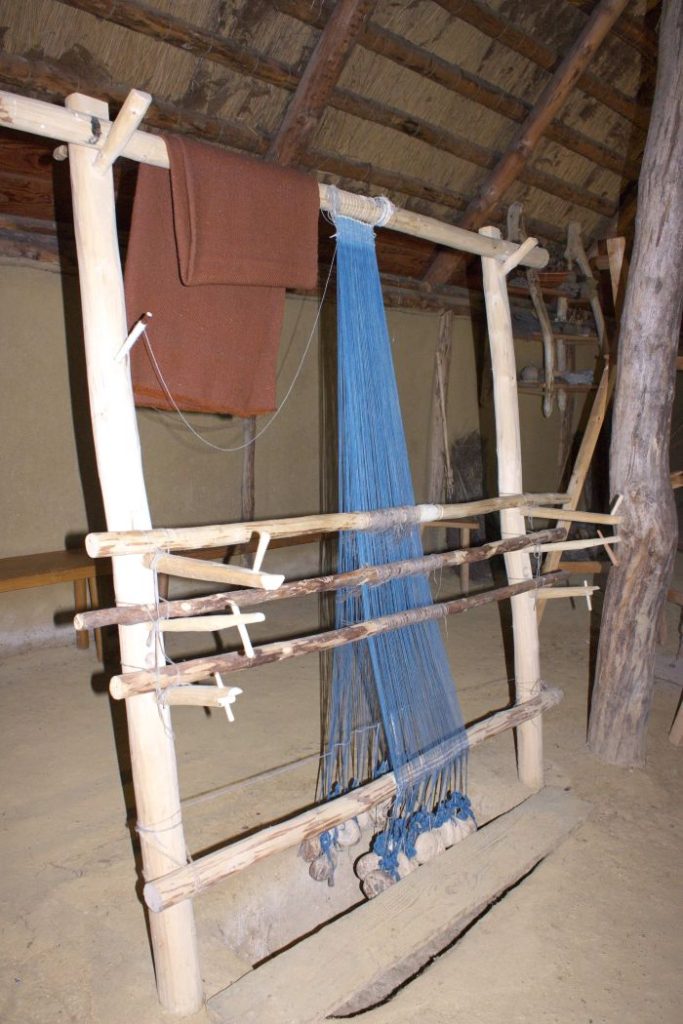
The house has three looms that are permanently installed there, plus a mobile loom that can be taken to wherever it is needed and used there. The looms are used for showing weaving technique to visitors, but also to test out things.
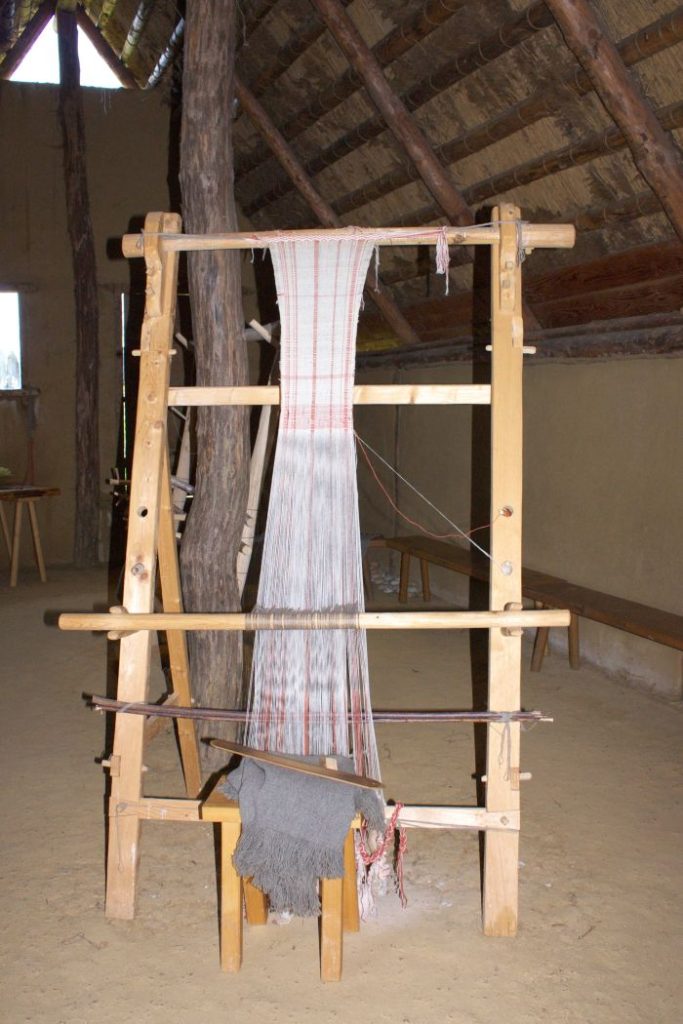
There's also a bunch of differently-shaped loom weights available, as well as some other textile equipment. I am already looking forward so much to working with all this at the Textile Forum.



